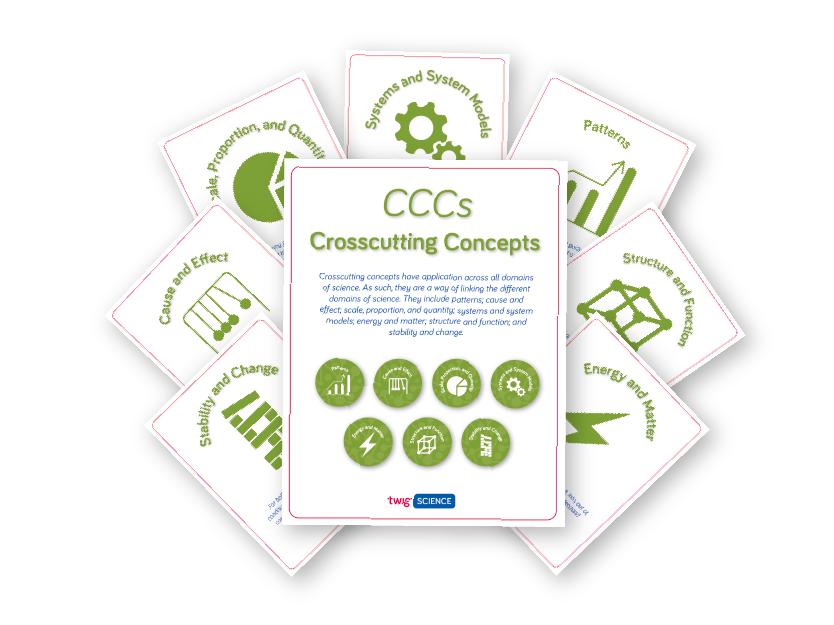What Are Crosscutting Concepts?
Applicable across all science disciplines
Think of Crosscutting Concepts (CCCs) as the resources required to analyze, interpret, and make sense of phenomena. They may seem initially abstract, but these concepts reappear across multiple disciplines as they help students build content knowledge and understand scientific processes.
Integrating CCCs into science lessons empowers students to delve deeper into scientific phenomena. With these foundational tools, students can analyze scientific processes and build a comprehensive understanding of how science explains the world around them.
CCC posters for the classroom
These free printable posters help students understand the importance and interconnectedness of all seven crosscutting concepts.

Experience the difference with 3-D learning
It’s easy to hit all three dimensions of 3-D learning with Twig Science — the robust, NGSS-aligned science program for K–8. Through phenomena-based exploration, students seamlessly integrate Crosscutting Concepts, Science and Engineering Practices, and Disciplinary Core Ideas, gaining a deeper, interconnected understanding of science.







